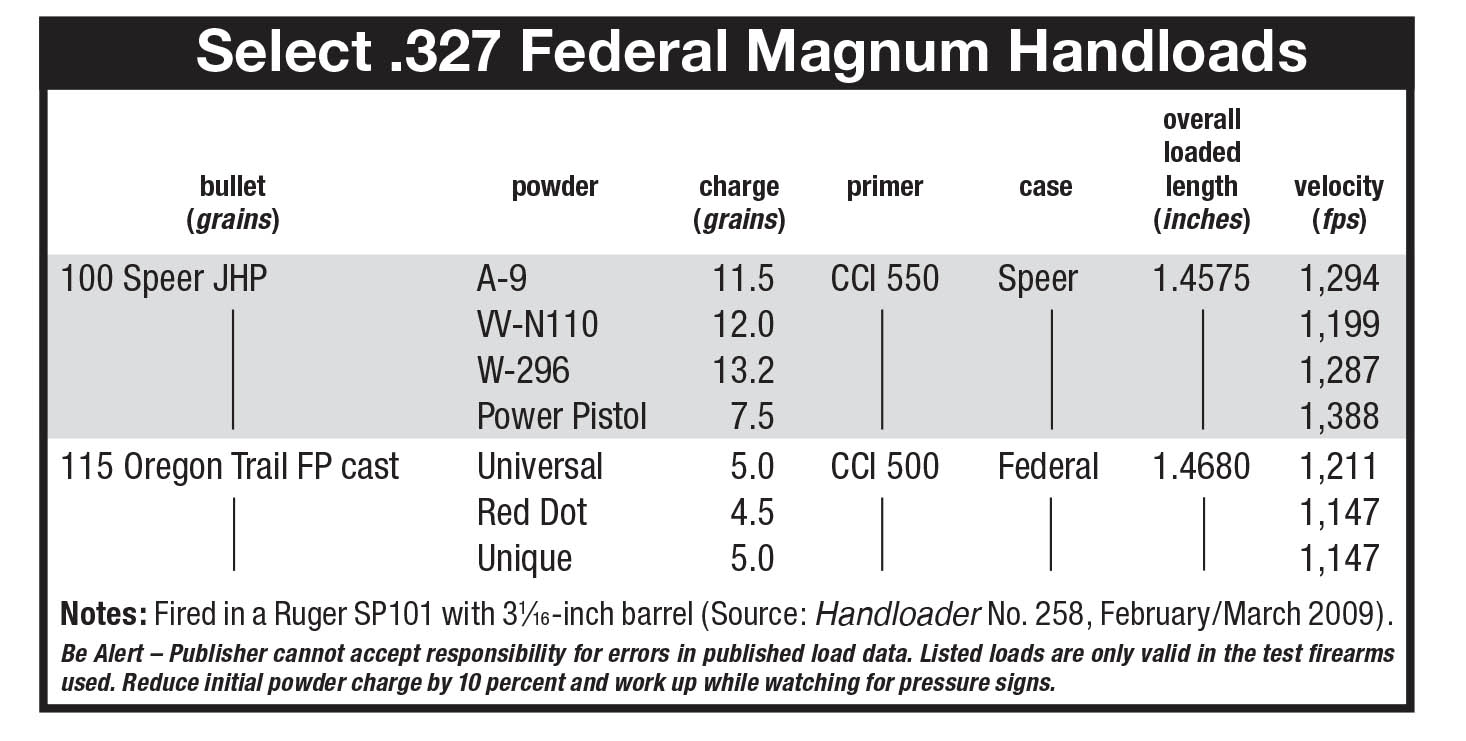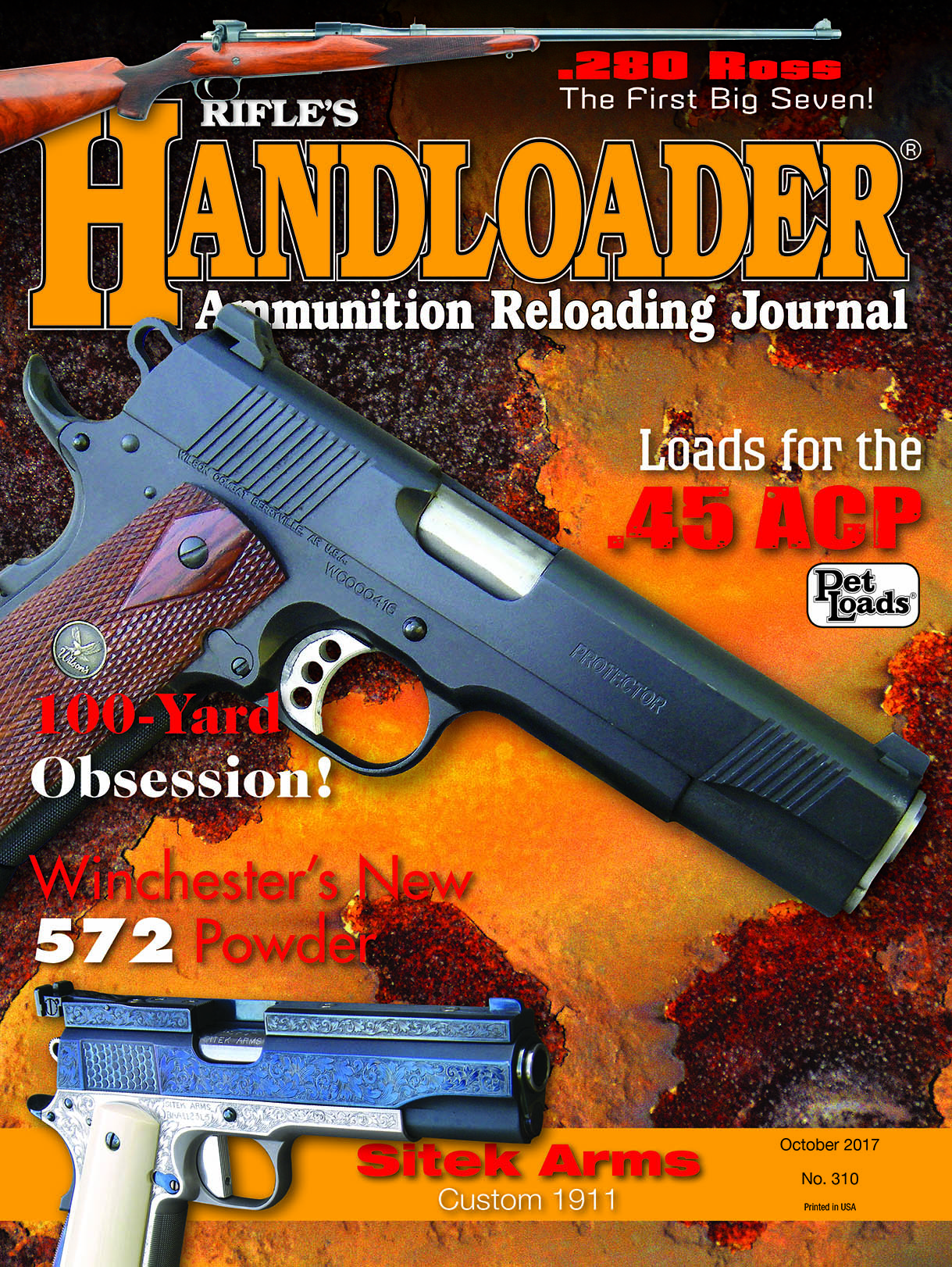Cartridge Board
.327 Federal Magnum
column By: Gil Sengel | October, 17
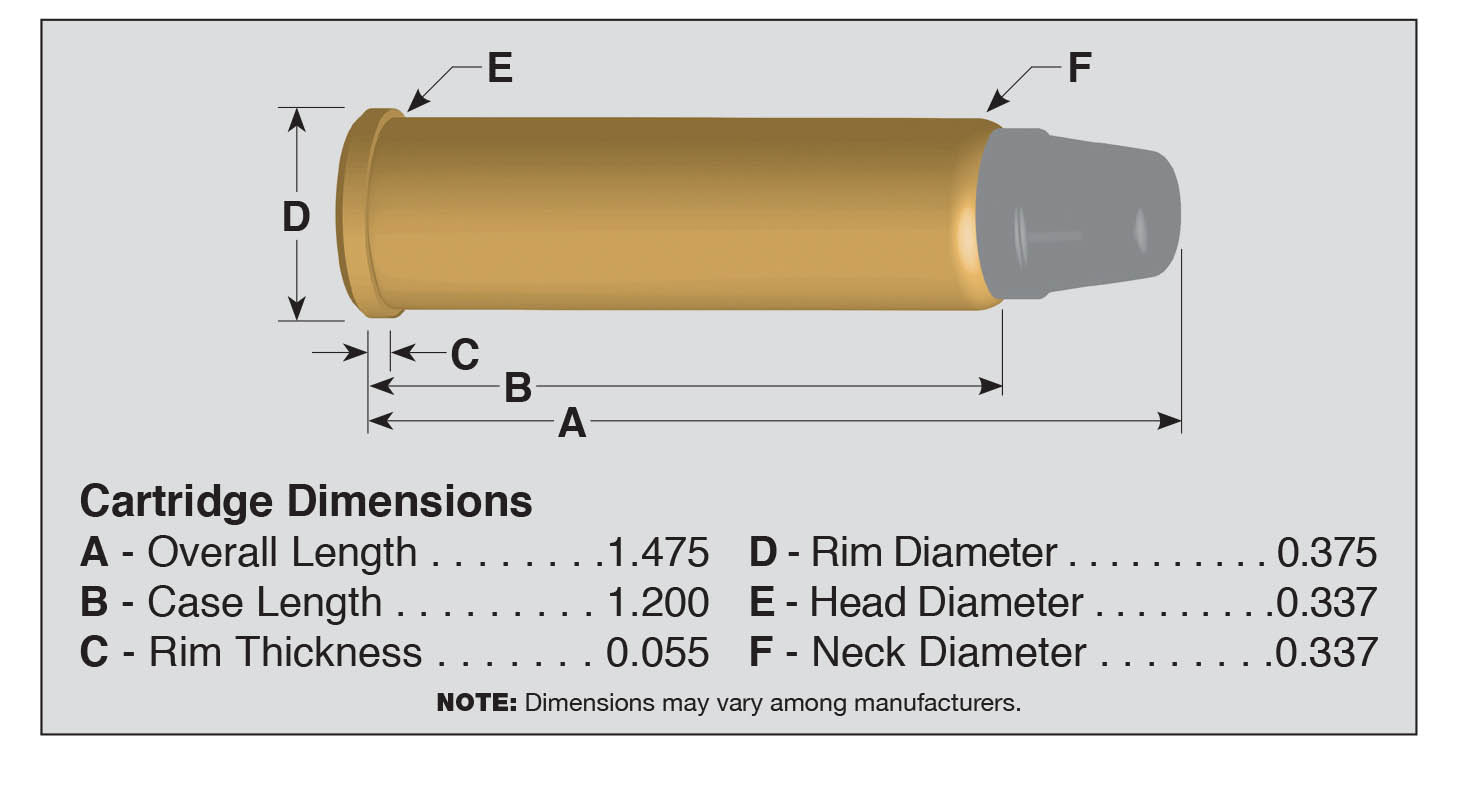
That old revolver led to others in .32 S&W Long and .32-20 Winchester. They all shot better than the first. Only cast bullets were ever used. If there is a better handgun for small, edible game, plinking or just carrying while woods-roaming, I can’t imagine what it would be. One regret is not acquiring a Smith & Wesson K-32 Masterpiece while they were still available.
The .32 Harrington & Richardson (H&R) Magnum came out in 1984. It is simply a .32 S&W or .32 S&W Long case lengthened to 1.075 inches. It was chambered in H&R lightweight revolvers, but they could only withstand about half the pressure of standard .357 Magnum or .44 Magnum ammunition. An 85-grain jacketed hollowpoint bullet was listed at 1,100 fps from a 45⁄8-inch test barrel. Muzzle energy came to some 230 ft-lbs.
Unfortunately, the firearms press didn’t know what to make of the cartridge. Few of them had ever seen or shot an H&R centerfire revolver, because H&R was a small company, and its products cost less than Ruger’s, Colt’s or Smith & Wesson’s. One expert summed it up thusly: It was a great cartridge, but only if shot in Ruger or Smith & Wesson revolvers, where handloaders could greatly increase the pressure. He didn’t have a clue!
The .32 H&R Magnum had only one purpose: Provide a reliable, adequately powerful self-defense cartridge that anyone could afford, yet not generate the fierce recoil and ear-splitting muzzle blast of .357 revolvers, so untrained folks could use it effectively. H&R revolvers were superior to the cheap, unreliable .25-, .32- and .380-caliber semiautomatics of the time. Writers and editors had trouble both seeing and saying this. So, with write-ups calling the round “underpowered” and its purpose misunderstood, the H&R’s fate was sealed by a lot of silly press.
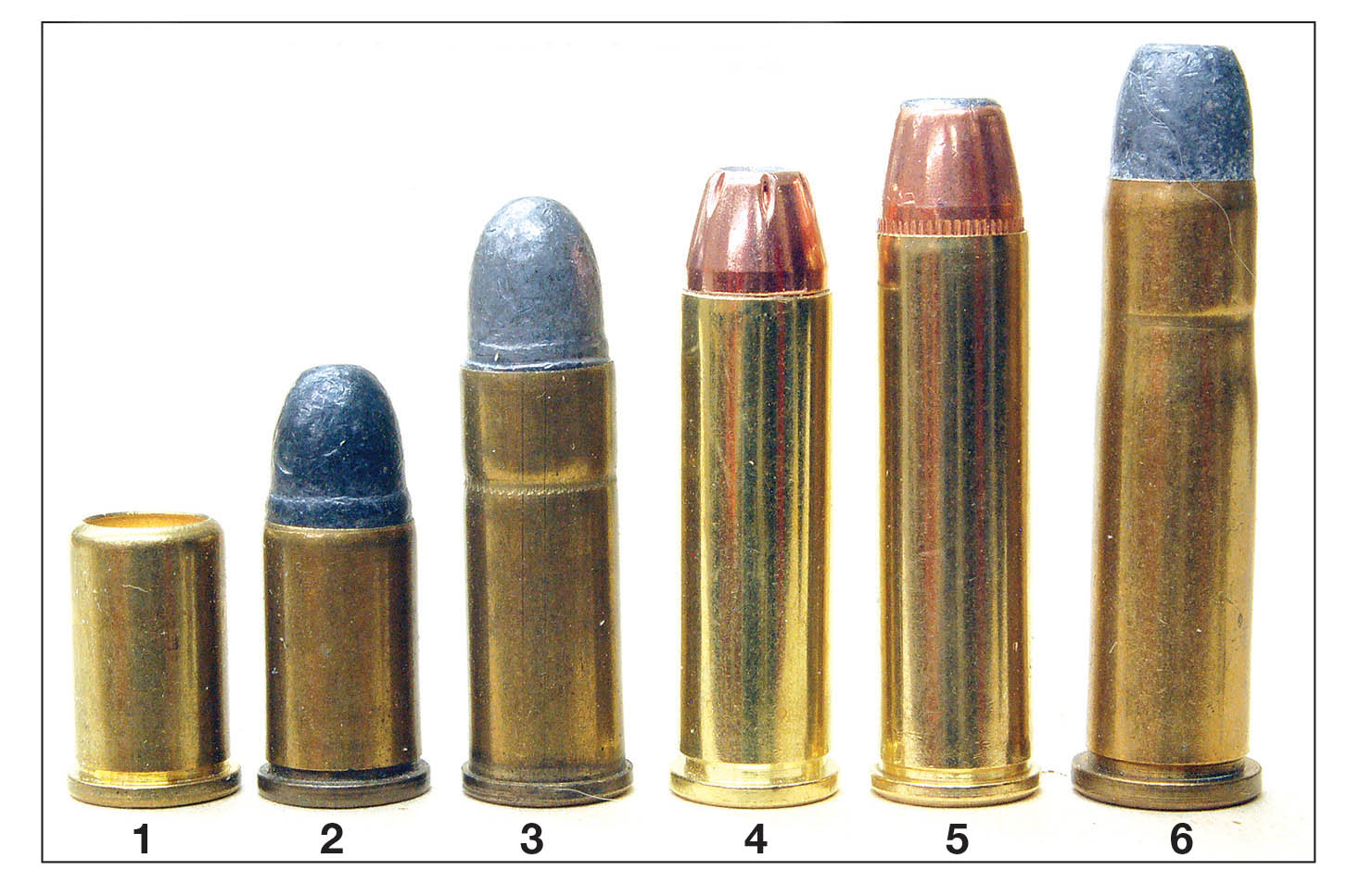
What was the purpose of this higher pressure? To answer that, consider the first .327 Federal loadings. Federal Cartridge Co. had two, an 85-grain Hydra-Shok bullet at 1,330 fps and a 100-grain jacketed softpoint at 1,400 fps; both figures are muzzle velocities. Speer loaded a 115-grain Gold Dot hollowpoint to 1,300 fps. These numbers are said to be either factory figures or results of firing the finalized experimental loads in the only revolver chambered for the .327 Federal at its introduction – a Ruger SP101 with a 31⁄16-inch barrel, depending on which source one accepts.
What is certain is that the 2008 Federal catalog, the first to list the .327 Federal, shows a 100-grain softpoint at 1,500 fps generating 500 ft-lbs of muzzle energy, and an 85-grain Hydra-Shok at 1,400 fps with 370 ft-lbs of energy. Both are from a 4-inch, vented test barrel. In the 2010 catalog, an 85-grain jacketed softpoint at 1,400 was added.
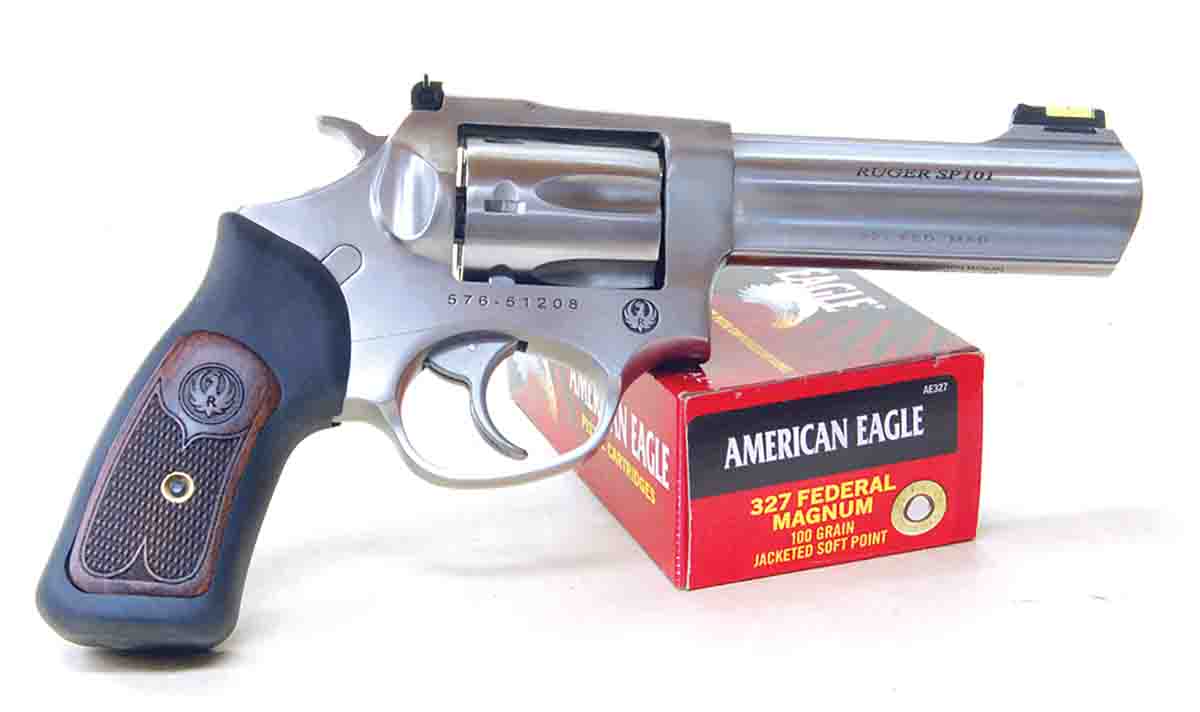
Being concerned about these numbers is really much ado about nothing. Barrel length, cylinder length, cylinder throat diameter, barrel-cylinder gap and forcing cone length all affect velocities. Just for curiosity, a few rounds of Federal 100-grain softpoints were shot from a Ruger SP101 with a 4.190-inch barrel and a .0045-inch barrel-cylinder gap. Velocity averaged 1,415 fps at 8 feet over an Oehler 35P chronograph. A five-shot group spanned 1.75 inches at 25 yards but was twice as tall as it was wide.
It has escaped no one’s notice that the 500 ft-lbs energy figure equals or comes very close to many 110- and 125-grain bullet loadings in the .357 Magnum when fired in 4-inch, vented test barrels. Six cartridges also fit in .327 Federal revolvers while .357s hold only five in the same size revolver. All of this is good.
Now comes the hard part. Reviewers say the .327 Federal has up to 20 percent less recoil than certain .357 Magnum loads in comparable revolvers. Blast and concussion is also supposedly less. Well, maybe, but the difference escapes me. I am, however, regularly accused of being an insensitive guy.
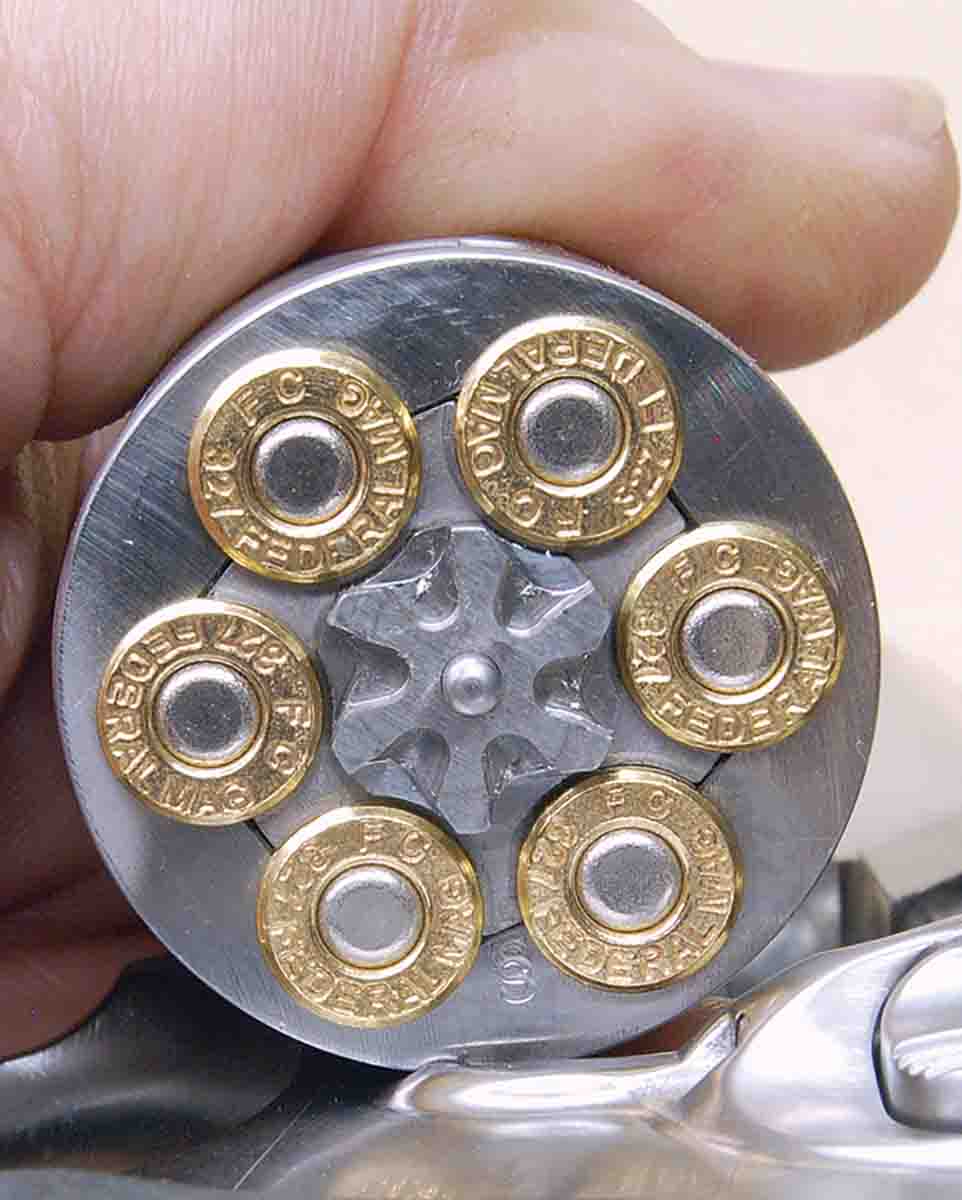
This brings us to “usability.” If needed in a defensive situation, without hearing protection, the .327 Federal is usable but not controllable (just like little .357 Magnum revolvers) unless the user is very strong and very well trained. Grip size of these revolvers is simply too small.
A humorous moment occurred when researching this piece. It seems a chap who did a review of the then-new .32 H&R Magnum years ago also covered the .327 Federal when it came out. He opined the .32 H&R was underpowered and a missed opportunity to do something great. The fellow later thought the .327 Federal was magnificent but recommended that most folks shoot .32 H&R Magnum ammunition in the little revolvers to avoid recoil and blast.
On the other hand, the .327 Federal is fine for anyone who likes shooting revolvers, plinking or small-game hunting out to 100 yards or so. A longer barrel and more adequate grips may be needed, and never forget ear plugs! Or, as the expert said, just fire .32 H&R loads (or equivalent handloads) in the .327 Federal Magnum.
